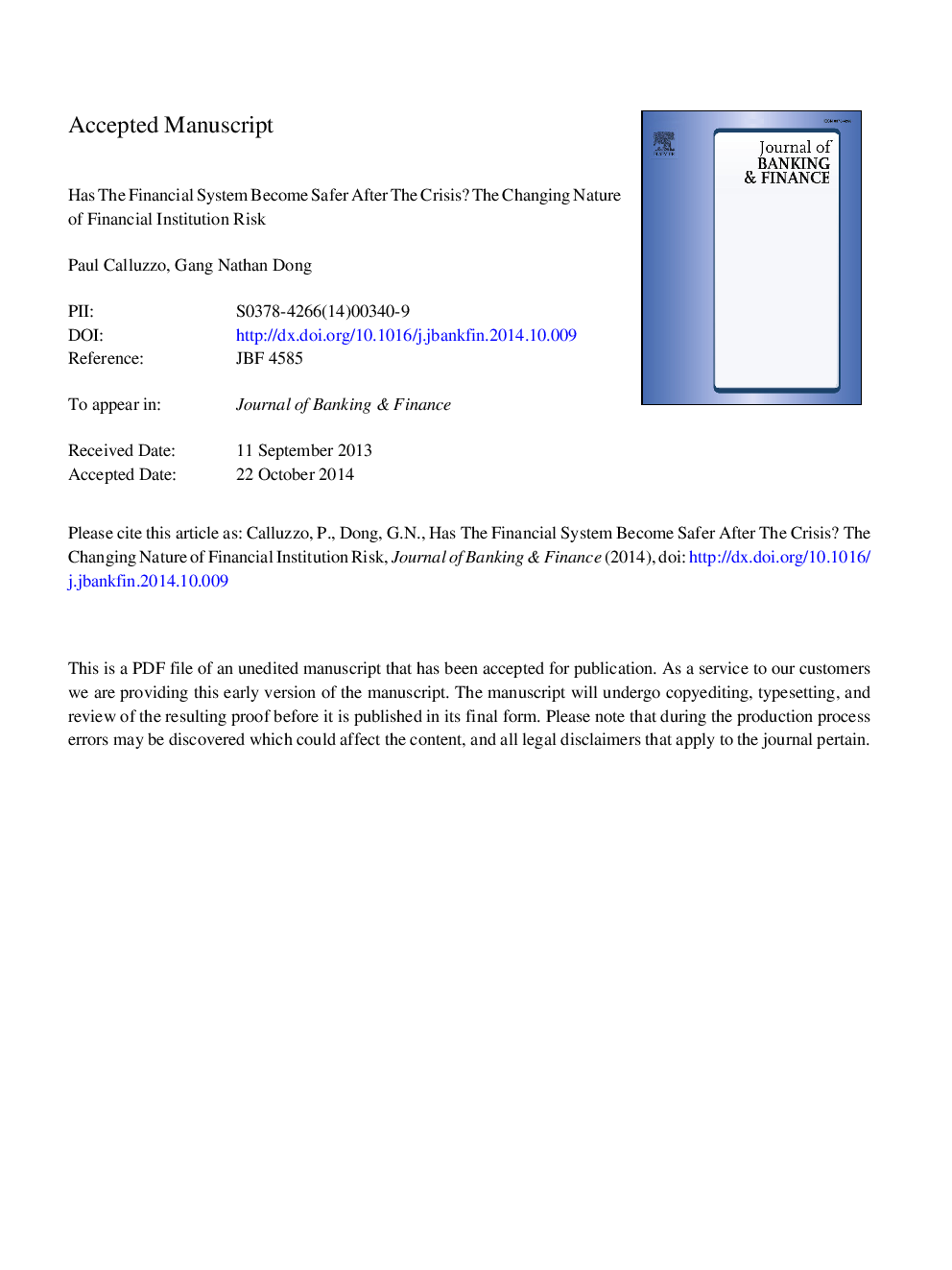| Article ID | Journal | Published Year | Pages | File Type |
|---|---|---|---|---|
| 5088724 | Journal of Banking & Finance | 2015 | 46 Pages |
Abstract
Six years after the collapse of Lehman Brothers, the question of whether the U.S. financial system has become less risky remains unanswered. On the one side, new regulations including Dodd-Frank and Basel III have made improvements by requiring higher bank capital, and financial institutions themselves have reduced risk-taking activities. On the other side, it has been argued that “the fundamental risks remained and the efforts of regulators and politicians were simply rearranging the deckchairs on the Titanic.” (Baily and Elliott, 2013) This paper highlights the changing nature of financial institution risk from 2005 to 2011. It finds that while these institutions have become less risky individually after the crisis, the financial market has become more vulnerable to systemic contagion. The causal inference that the crisis and the post-crisis legislation have gradually changed the nature of financial institution risk is drawn from a quasi-experimental design. This finding suggests that the ever more integrated financial system might experience more synchronized contractions in future crises, providing empirical support for the proposals of the inter-bank collective regulation of banks by Acharya (2009) in addition to the intra-bank collective regulations as in Froot and Stein (1998) and BIS (1996, 1999).
Related Topics
Social Sciences and Humanities
Economics, Econometrics and Finance
Economics and Econometrics
Authors
Paul Calluzzo, Gang Nathan Dong,
